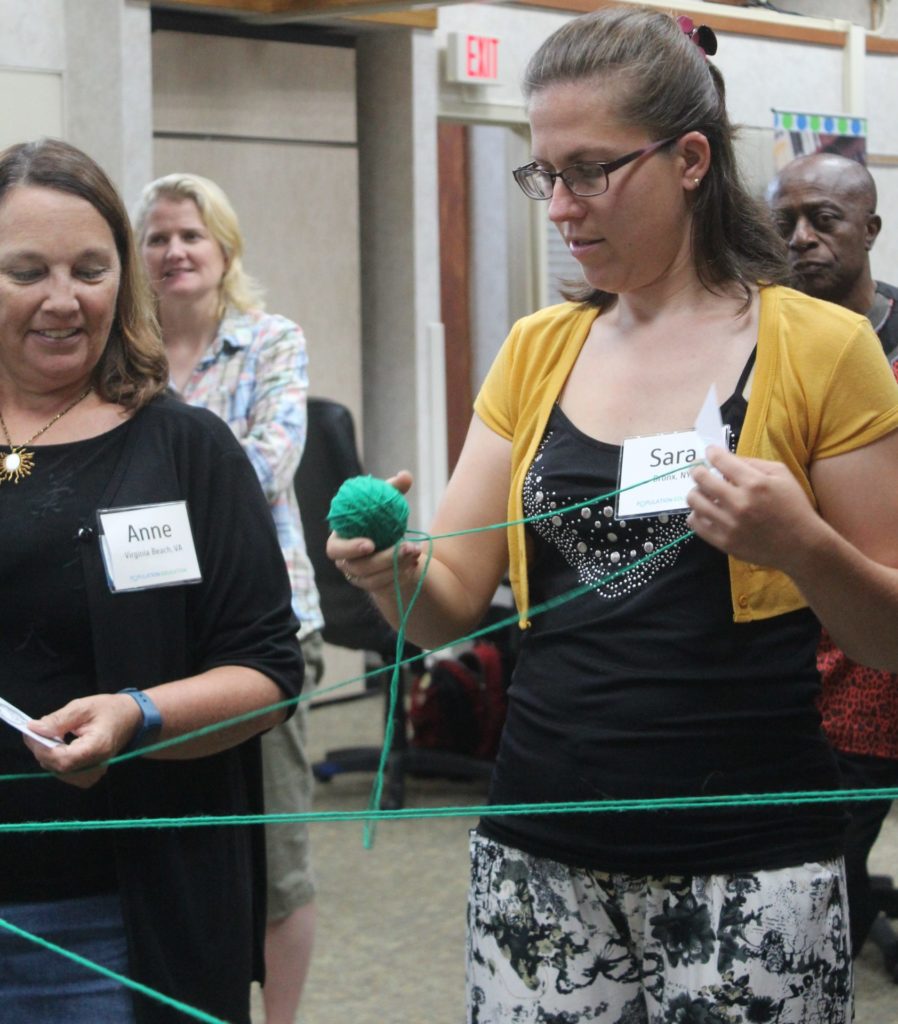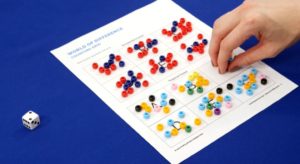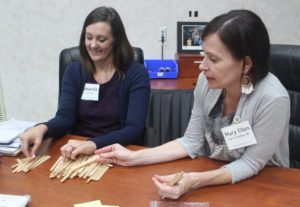Population Education, March 2023
Written by Pamela Wasserman, Senior Vice President for Education | Published: March 13, 2023
Into the Woods With PopEd
Teaching About Forests and Biodiversity
The connections between human activities and threats to habitat and biodiversity are major themes in the PopEd curriculum. From elementary lessons on the basics of wildlife endangerment to high school activities examining the politics of forest conservation, we have a wide variety of classroom resources to help students of all ages gain a better understanding of the delicate balance between people and other living things.
Since this magazine issue features Dr. Gladys Kalema-Zikusoka’s important conservation work with Uganda’s mountain gorillas, I wanted to highlight several of our K-12 resources that specifically address deforestation and its impacts on habitats and biodiversity. After all, forests are home to 80 percent of the world’s land-based plants and animals.
Grades K-5
Young children are filled with curiosity about the natural world and are interested in how they can be good stewards of habitats in their communities and around the globe. In our elementary curriculum, Counting on People, an entire unit focuses on people and wildlife.

In “Web of Life,” young students become characters (water, sun, tree, soil, air, bird, worm, rabbit, human, etc.) in an interactive story about a forest habitat. As the teacher reads the story, a ball of yarn is passed from one character to another, forming an intricate web. If anything happens to one character (e.g. a tug on the yarn), all are affected. Discussion questions explore these connections and the role that human activities play on the health and well-being of the other characters in the ecosystem.
Who can resist the giant panda, that cuddly megafauna that resides only in China’s bamboo forests? In “Pondering Pandas,” another role-playing simulation, student pandas roam their habitat (classroom) trying to amass enough bamboo (paper towel rolls) to survive, even as some of their primary habitat is cleared (desks removed) for development in the heavily populated Yangtze River Basin region. This simulation illustrates what happens when both people and animals struggle to meet their basic needs with resources from the same area.
“Lessons from The Lorax” builds students’ reading comprehension skills and introduces science themes of cause-and-effect in nature. As the greedy Once-ler creates more demand for thneeds, the Truffula forest and its inhabitants disappear. Dr. Seuss’s messages from 50 years ago still resonate with readers today.
Grades 6-8
Understanding the root causes of deforestation is the theme of “Timber!,” an activity that models supply and demand of forest products (wood and paper) and farmland (created from clearing the trees). Students use wooden craft sticks to represent forest growth and depletion as the area’s population changes.

In “World of Difference,” students calculate probabilities (a middle school math topic) as they compare biodiversity in a temperate forest in the U.S. and a tropical forest in Rwanda. Different species are represented by small props—dried beans, macaroni, nuts, beads, etc.—on a grid that represents forest acres. A role of the die determines which acres get cleared. Higher population growth rates increase the odds of deforestation and loss of species.
Grades 9-12

High school students play the board game “Go for the Green,” making environmental and economic decisions along the way that will affect the fate of their fortunes and the rainforest. “Choice cards” ask them to weigh options as farmers, industrialists, government officials, and everyday consumers.
Sustainable management of a common resource is the goal of “What’s at Stake for the Forest?,” a strategy game where students assume roles of different stakeholders and must negotiate how best to balance competing priorities for a publicly owned forest. A case study on a deal to protect Canada’s Great Bear Rainforest in British Columbia sets the stage for the game.
To find out more about these lessons, along with related teaching resources, visit population.education/forests and population.education/biodiversity.
